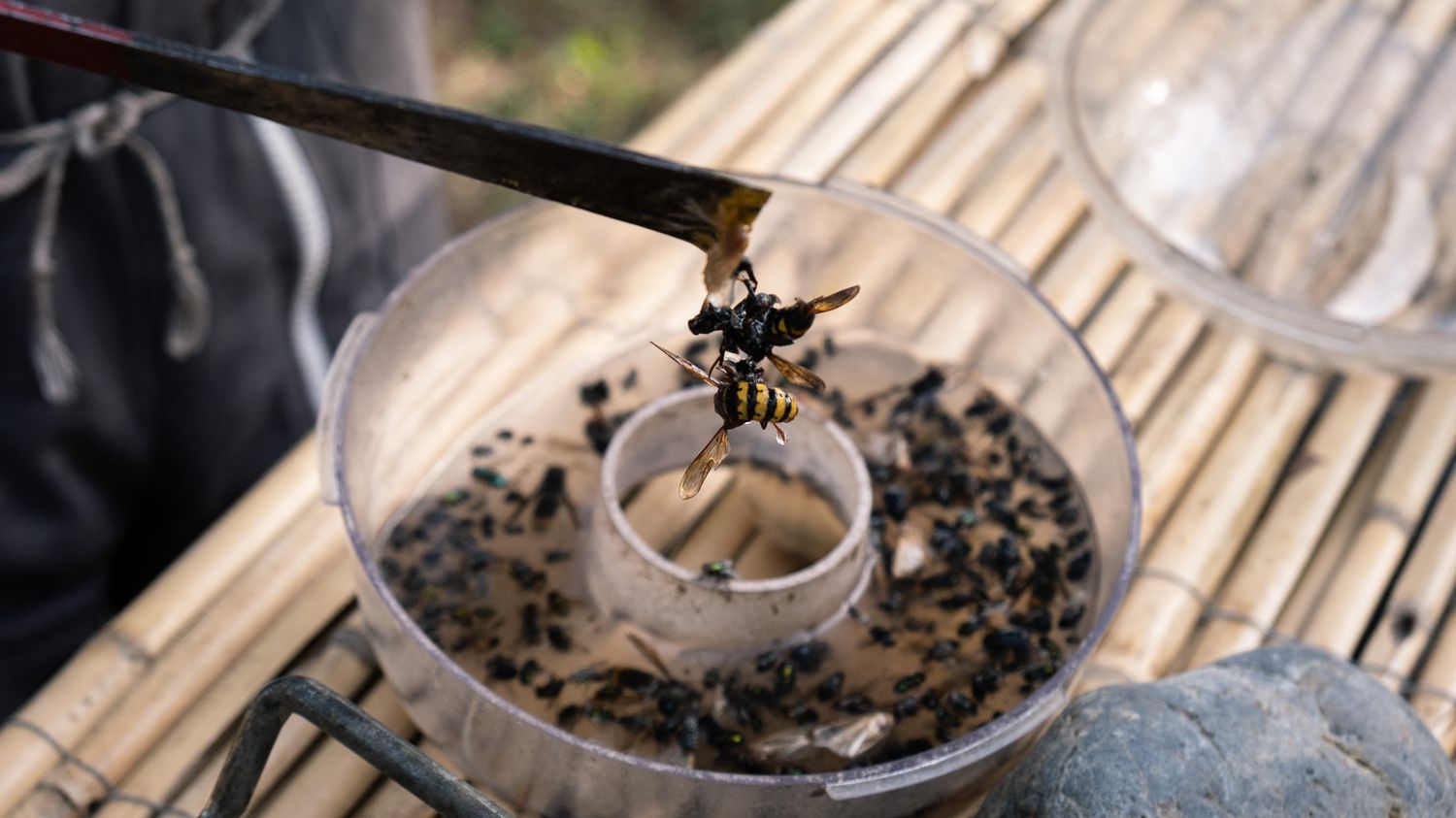This bee-killing insect has developed in France over the last twenty years. According to one study, it threatens more than 300,000 hives per year.

Published
Reading time: 2 mins

He is back. The Asian hornet, which arrived in the southwest of France in 2004 aboard a container from China, has spread across the country, becoming a real scourge. Today, according to a study by Paris Saclay University and the National Museum of Natural History, it threatens more than 300,000 hives per year, according to the highest predation scenario. With the arrival of spring, beekeepers try as best they can to protect their hives.
In Paris, Lorraine Félix’s bees are just coming out of winter: “The queens have resumed their laying since February and the first nectars are starting to arrive,” explains the beekeeper in a protective suit who inspects the four hives she maintains on the roof of the Communist Party headquarters, Place du Colonel Fabien. But these bee colonies face a threat, even in the heart of the capital: the Asian hornet. “One Asian hornet nest per season consumes around 11 kilos of insects. In the city, this represents up to 66% bees. This therefore has an impact on our apiaries.”specifies the beekeeper.
Traps not recommended
Even before killing them, the insect from Asia causes stress in these bees which prevents them from going out to collect flowers. To protect them, Lorraine Felix takes out a weapon: a plastic box. “A trap with traps, in which we will put an attractant to trap the hornet founders. The objective is that they do not constitute nests which, then, become a potential danger for the population and for our apiaries at the end of season, that is to say around August-September, and sometimes until November“, explains Lorraine Félix.
However, the effectiveness of these traps remains to be scientifically proven. “The Asian hornet is an invasive species and, at present, we do not have very effective control tools”, assures Eric Darrouzet, teacher-researcher at the University of Tours. This specialist recommends using selective traps, “so as not to impact the antomophone, that is to say non-targeted insect populations. This is why We have to go and see these traps every day, this way we can release the insects trapped by mistake. You also need to change the bait every week.” He therefore advises against homemade traps, made from plastic bottles, devices which risk trapping other insects and therefore disrupting biodiversity.
